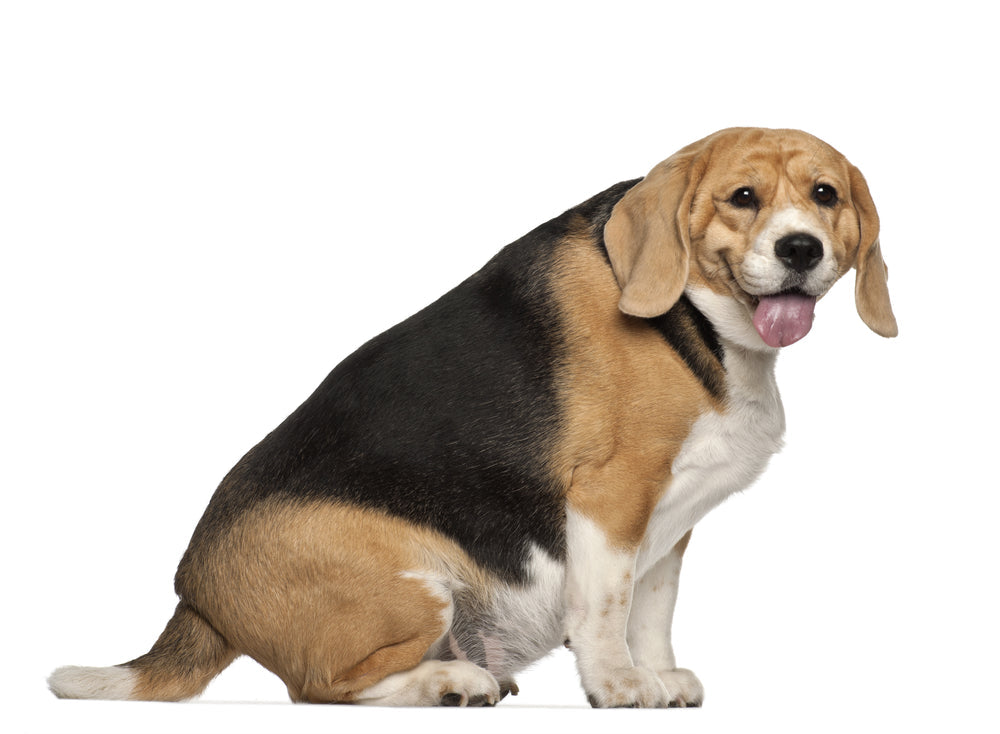By Dr. Rebecca MacMillan BVetMed BSAVA PGCertSAM MRCVS
Does your dog need to lose weight? We know it can be a challenge to implement a new diet and regime – so we’re here to help! Let’s look at all the vet-approved ways you can improve the health of your furry family member.
Is my dog overweight?
The starting point is knowing whether your dog needs to lose weight. I would recommend booking an appointment with your veterinary team so that they can assess your pet. As well as weighing your dog they will perform a body condition score, which can accurately determine whether your dog is carrying a few extra pounds.
Check out ‘How Much Should My Dog Weigh?’ for more information.
Top tips for weight loss in dogs
You should always follow your vet’s recommendations for sensible weight loss goals and time scales. This is especially important if your dog has a medical condition such as diabetes.
But I have put together some of my best general tips to help you along the way –
Get the whole family involved.
Firstly, your dog’s diet will not work unless the whole family are motivated to stick to it. Talk with everyone in the household about your dog’s health and why table scraps or extra treats are no longer appropriate. This is particularly key for children or elderly relatives who are often unable to resist those big brown eyes.
A food diary
A food diary can be really helpful, particularly if you’ve struggled with weight loss regimes for your dog in the past. By recording absolutely everything your dog eats in a day you might be able to work out where you’re going wrong. This includes all their training treats, as well as any toast crusts and little bits of ham you sneak your dog’s way.
Portion control
Always start by reading the packet guidelines for their pet’s diet. It’s amazing how many people just guess how much their dog should be receiving. You should be feeding for your dog’s ideal body weight, more than this will lead to unwanted weight gain. There is of course some variation, with a proportion of dogs needing a little more than the feeding guidelines and some a little less. However, it’s a good starting point and just reading the manufacturer's instructions may help you to work out what you’ve been doing wrong.
Weighing out their food
This bit is key. You must weigh out your dog’s food accurately each and every day. Many owners report giving ‘a handful of biscuits’ or a ‘cup of kibble’. Thus method can vary considerably, whereas the scales will stay consistent and accurate.
Weight reduction diets
Weight reduction diets are a brilliant tool for your dog’s weight loss journey. Many owners talk about ‘cutting back’ their dog’s normal food, but this can just lead to a hungry and stressed dog – and more begging behaviour! Weight reduction diets are formulated to be lower in calories and higher in fibre to keep dogs full. Your dog won’t feel like they are being deprived as they are still receiving a decent volume of food. Your vet will be able to recommend some brands for you.
Feeding timings
Some pet parents struggle with the fact their dog is ‘always hungry’. Dogs are opportunists and scavengers by nature, they are always on the lookout for food! To keep them satisfied why not feed them little and often? Take the total food they can have in 24 hours and instead of splitting it into two meals, split it into 3 or 4 equally sized meals instead. Your dog will still receive the same amount of food overall but in more frequent sittings.
Exercise
Exercise plays an extremely important role in weight loss but remember the saying ‘you can never outrun a bad diet’. Exercise must therefore be carried out alongside sensible diet changes. Any increases in exercise should be introduced gradually, especially if your pet has a health complaint like arthritis. Check out our blog on exercising your arthritic dog.
Cut those treats
Treats and table scraps are a stumbling block for many pet owners. Snacks add extra calories on top of your dog’s daily meal allowance. Instead, keep back some of your dog’s kibble allowance to use as treats, invest in some low-calorie treats for occasional use or perhaps try a safe fruit or vegetable snack.
Puzzle feeders
If your dog gulps down their dinner try a puzzle feeder. This will help them to feel the sensation of the food hitting their stomach, making them more satisfied. Plus, it is excellent mental and physical stimulation.
Regular weigh-ins
Weighing your pet regularly will help you to check that you are making progress. If your pet hasn’t lost weight after a couple of months, then you should speak to your veterinary team again for advice.
Steady progress
Don’t expect big overnight changes! Gradual, steady progress is much healthier and more sustainable for your pet. A safe rate of weight loss would be about 1% of body weight per week which takes time and commitment. Speak to your vet about what this might look like for your dog.
Summary
Obesity causes big problems for dogs, so losing weight is key to improving their health and quality of life. The whole family needs to be on board. If you are not sure how to start, then speak to your veterinary team for advice and support.
The Happy Joints Quiz
Pawable is the new natural alternative to support joints. Allowing you to enjoy more time together without more medications.
✅ A unique blend of HYDROLYSED and UNDENATURED collagen.
✅ Hundreds of rave reviews
✅ So good, it comes with a 90 day money back promise
👇Take the quiz below and find out if Pawable is right for your dog 👇

